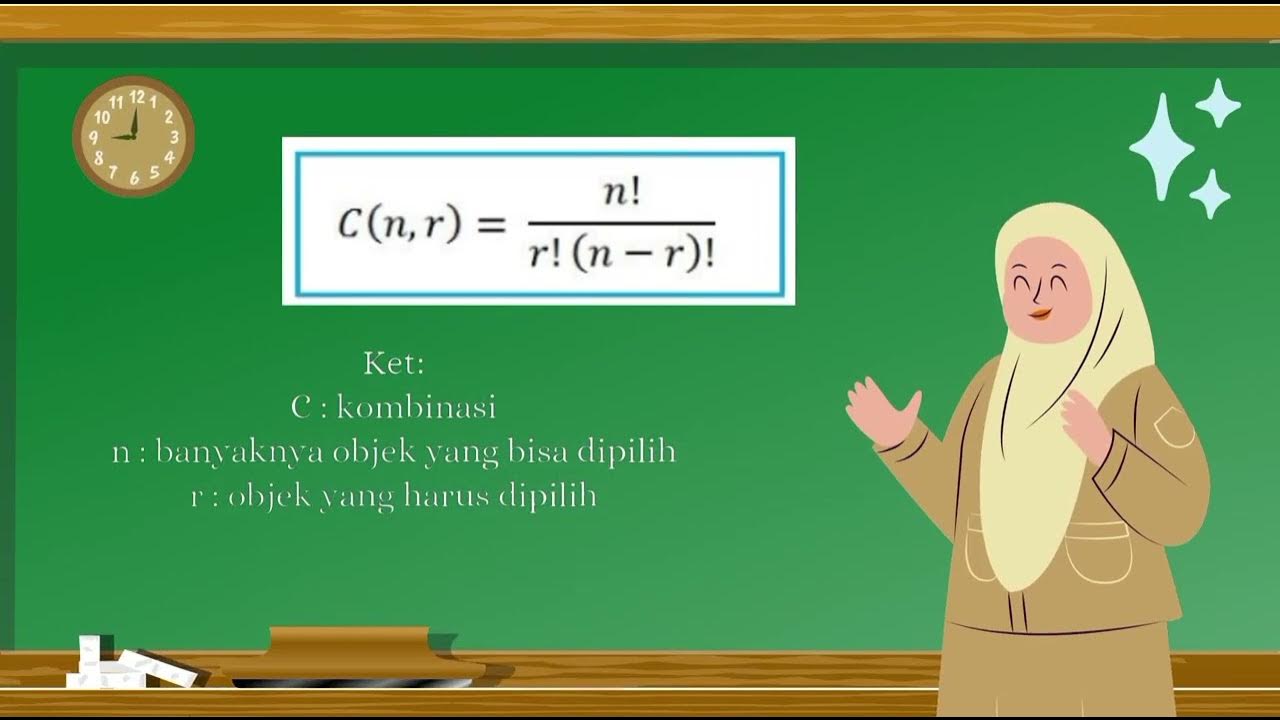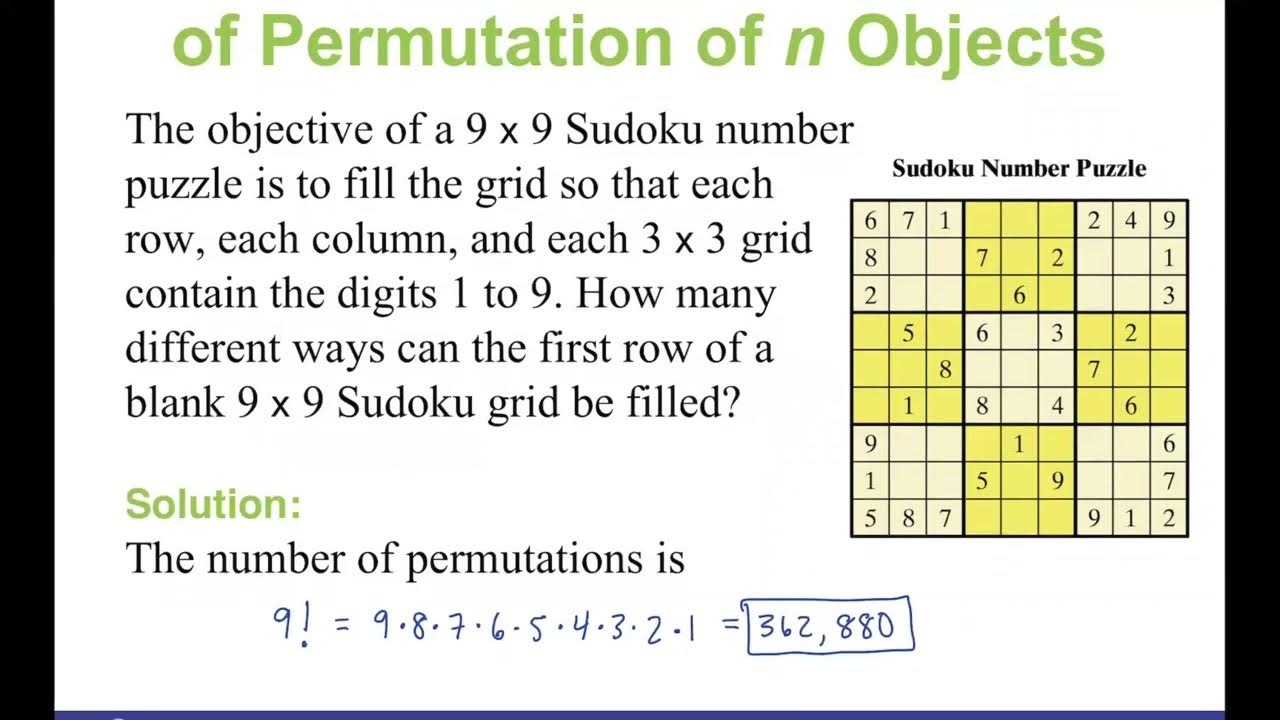(Peluang)kombinasi.flv
Summary
TLDRThis educational video delves into the concept of combinations, explaining that they involve selecting elements without considering their order. The presenter introduces the formula for combinations (nCr), followed by detailed examples demonstrating how to compute combinations. Key concepts such as the relationship between combinations and permutations are also explored, with practical examples involving choosing team members with and without specific roles. The video emphasizes the importance of understanding when to apply combinations versus permutations, reinforcing the distinction through clear, step-by-step calculations.
Takeaways
- 😀 Understanding combinations: Combinations are selections of items where the order does not matter, unlike permutations where order is important.
- 😀 Combination formula: The formula for combinations is expressed as nCr, which is equal to n! / (r!(n - r)!).
- 😀 Example 1: 8C3 is calculated by applying the formula: 8! / (3! * (8 - 3)!), which simplifies to 8 * 7 * 6 / (3 * 2 * 1) = 56.
- 😀 Symmetry of combinations: 8C3 is equal to 8C5, showing that choosing 3 items from 8 is the same as leaving 3 items out of 8.
- 😀 Key takeaway: The sum of the two numbers in a combination always equals the total number of items: nCr = nC(n - r).
- 😀 Simplified calculation method: For faster calculation, one can directly multiply the top numbers of the combination (n, n-1, n-2) and divide by the factorial of r.
- 😀 Example 2: 8C2 is calculated by simplifying 8 * 7 / (2 * 1) = 28.
- 😀 Combination and permutation difference: Combinations are used when the order doesn't matter, while permutations are used when the order does matter.
- 😀 Example of permutations: When selecting a chairman and a secretary from 5 people, the order matters, so it’s a permutation (5P2 = 5 * 4 = 20).
- 😀 Practical application: For problems with positions (like choosing a leader or secretary), permutations are used, whereas for general selections, combinations are appropriate.
Q & A
What is the difference between combinations and permutations?
-Combinations are used when the order of selection doesn't matter, while permutations are used when the order does matter.
What is the formula for combinations?
-The formula for combinations is n C r = n! / [(n - r)! r!], where n is the total number of items and r is the number of items being chosen.
What does n! mean in the combination formula?
-n! (n factorial) means multiplying all the integers from n down to 1. For example, 5! = 5 × 4 × 3 × 2 × 1.
Why is the formula for combinations used in this context?
-The formula for combinations is used to find how many different ways a certain number of items can be chosen from a set without considering the order of selection.
How is 8 C 3 calculated step-by-step?
-For 8 C 3, the calculation is 8! / [(8 - 3)! 3!] = (8 × 7 × 6) / (3 × 2 × 1) = 56.
What does the property 'n C r = n C (n - r)' mean?
-This property means that the number of combinations of selecting r items from n is the same as selecting (n - r) items from n. For example, 8 C 3 is the same as 8 C 5.
How can you calculate combinations quickly without using the full factorial formula?
-You can multiply the top r numbers and divide by the factorial of r. For example, for 8 C 2, multiply 8 × 7, and then divide by 2 × 1.
How is the calculation for combinations of 8 C 2 different from 8 C 3?
-For 8 C 2, the calculation is 8 × 7 / 2 × 1 = 28, while for 8 C 3, the calculation is 8 × 7 × 6 / 3 × 2 × 1 = 56.
What is the main distinction between using combinations and permutations in selecting individuals for specific roles?
-Combinations are used when roles or order do not matter (e.g., selecting committee members), while permutations are used when roles or order do matter (e.g., selecting a president and a secretary).
How do you calculate the number of ways to select a president and secretary from 5 people?
-This is a permutation problem. Using the formula for permutations, 5 P 2 = 5 × 4 = 20, as the order of selection matters.
Outlines

This section is available to paid users only. Please upgrade to access this part.
Upgrade NowMindmap

This section is available to paid users only. Please upgrade to access this part.
Upgrade NowKeywords

This section is available to paid users only. Please upgrade to access this part.
Upgrade NowHighlights

This section is available to paid users only. Please upgrade to access this part.
Upgrade NowTranscripts

This section is available to paid users only. Please upgrade to access this part.
Upgrade NowBrowse More Related Video
5.0 / 5 (0 votes)





